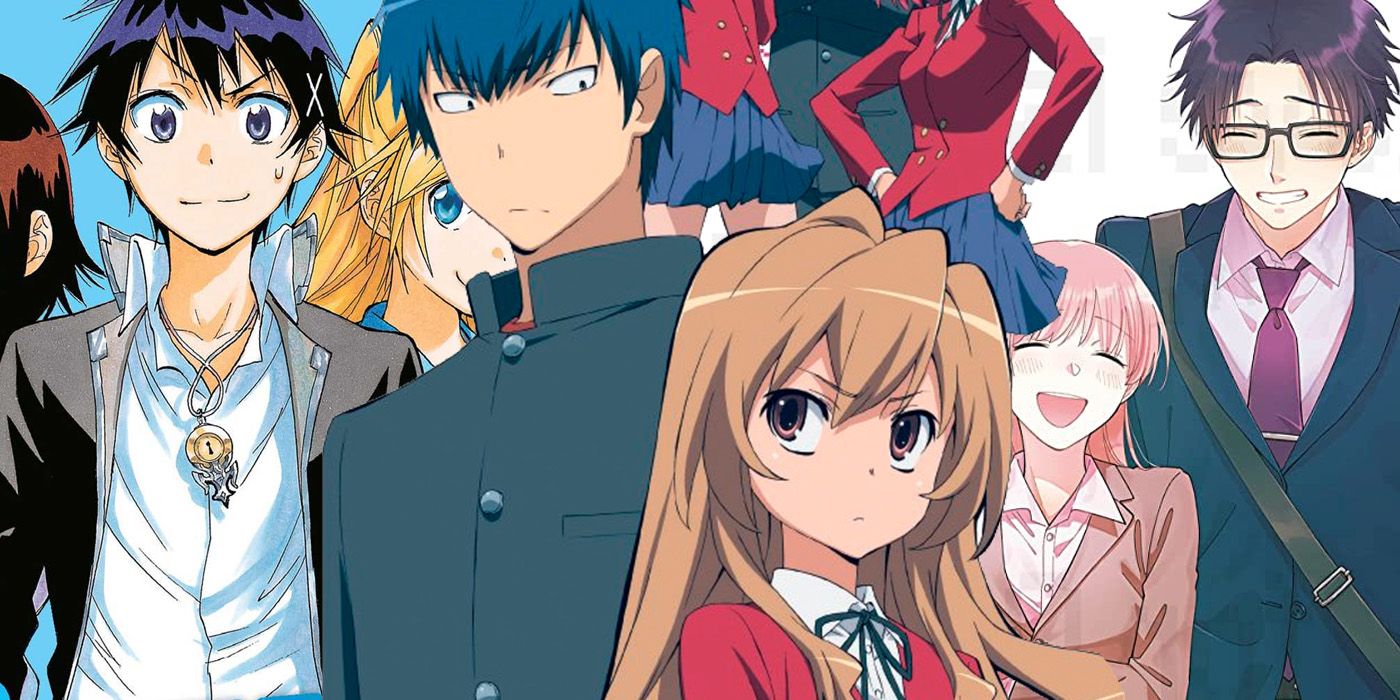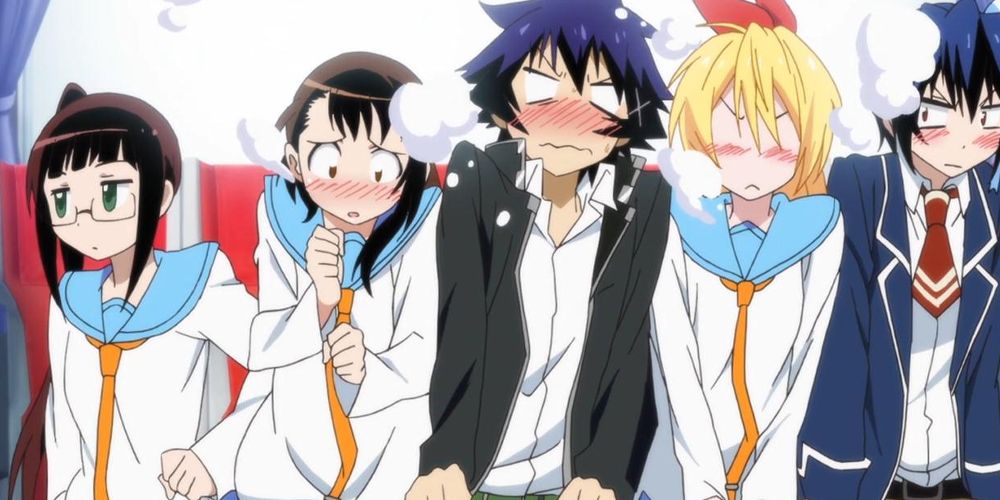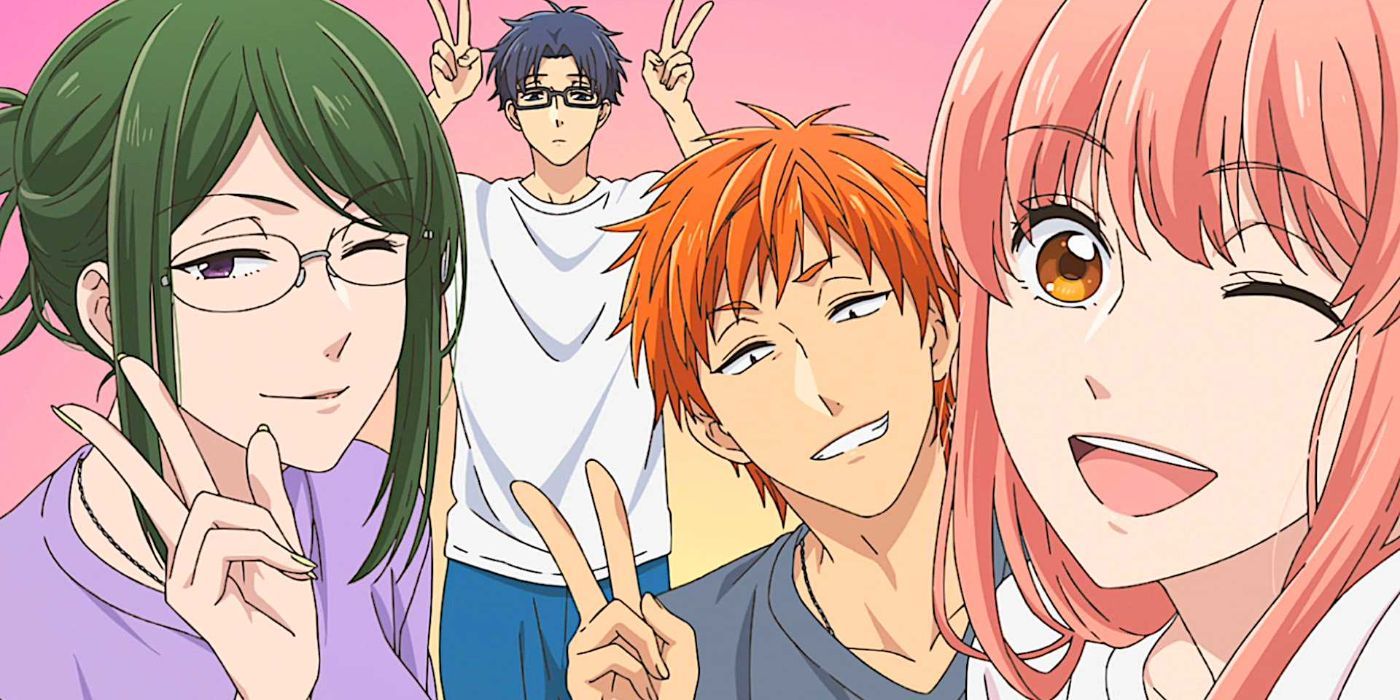The romantic comedy subgenre is one of the most popular and broadly appealing in all Japanese animation. Every anime season has a few new rom-com anime titles to offer, many of which take place in high school or involve a harem made up of a relatable male lead and his gorgeous, waifu-material love interests. Aside from issues such as clichés, self-inserts and sometimes excessive fan service, rom-coms often suffer from pacing issues.
When any anime is paced well, the major plot points occur at just the right time to move the plot along and maintain tension without rushing anything or, inversely, having long stretches where nothing important happens. Any rom-com anime's major plot points will focus on the romance itself, including the eventual "happily ever after" payoff at the end. However, even for comedy's sake, a rom-com shouldn't stretch itself too thin -- though many titles do just that.
When Comedy Stretches the Romance Too Thin in Anime
True to its name, the rom-com subgenre blends romance with comedy, and with anime's strong visual flair and voice-acting performances, it's a compelling combination. Though it may look like a 50/50 blend of genres on paper, any rom-com is a true romance story at heart, with the comedy merely being a vehicle for delivering that romance, in addition to being cosmetic. If romance is the real meat of the matter for anime like Nisekoi, My Senpai is Annoying and Toradora!, then the comedy should complement it rather than dilute it or get in the way. However, anime like Nisekoi upset this delicate balance, and the pacing suffers for it.
A pure comedy anime like Gintama can go on for hundreds of episodes because the whimsical wackiness is the point, and anything can happen. This leads to unique pacing where the story is a massive montage of silly adventures, but a more traditional genre like romance can't afford to be so aimless. In Nisekoi, for example, the central romance and the conflicts involved could have had a complete story arc in just 12 episodes, or even just a two-hour anime movie.
Instead, Nisekoi opted for a "one step forward, one step back" approach and needlessly expanded the cast of characters into a harem. All that was for comedy's sake, not romance's sake. The initial premise suggested that romance was the real heart of Nisekoi, including the Romeo and Juliet theme of Raku and Chitoge's false relationship, Raku's locket and the identity of Raku's mystery girl from 10 years ago. That could have made for a plot-heavy yet short and sweet anime with elements of mystery and suspense.
Instead, this tight narrative became frayed and started wandering aimlessly. For devoted fans, more Nisekoi is a good thing, but from a narrative standpoint in terms of structure, theme and pacing, it's a disaster. In fact, by the time the anime ended after just over 30 episodes, Nisekoi's anime was messier than ever and even further from resolving the central romance. Other anime make a similar mistake in even fewer episodes, with the characters resolving absolutely nothing after 12 episodes and failing to hit more than one (at most) milestone in their relationship. Such anime are paced so that they become open-ended commercials for the original manga or webcomic.
When Rom-Com Anime & Manga Pace Themselves to Good Effect
Fortunately, other romantic comedy anime prove that comedy, romance and good pacing can all work together to create solid entertainment. One strategy is to treat the central romance as a drama instead, where hitting plot and relationship milestones are an absolute must, regardless of comedy. Toradora!, a beloved rom-com of the late 2000s, did exactly that. In roughly the same time frame as Nisekoi, Toradora! pushed its central Ryuji/Taiga romance in bold new directions and added serious substance to their relationship and their respective character arcs. It helped that Toradora! kept its cast of characters under control and, at most, expanded things into a love square that didn't last all that long. This mission-oriented focus gave Toradora! the pacing it needed to deliver a strong, funny and sometimes tearful romance that has stood the test of time.
Another strategy is to have a 50/50 balance of romance and comedy after all but simply limit the amount of directionless fluff. Nisekoi's narrative style would have had more merit if there was simply less of it, with examples of this including the likes of Wotakoi and Aharen-san Is Indecipherable. Both anime series smartly kept themselves in check. Ahren-san is only passable as a rom-com, but to its credit, the anime pushed its two kuudere love interests toward an essential milestone in Episode 12, where they declared their love for one another. This made the season feel well-paced as opposed to being 12 episodes of conventional high school hijinks, and the payoff earned a positive reception among fans.
Meanwhile, Wotakoi kept pacing in mind and was fairly selective with its rom-com fluff. Many of the episodic scenes and events exist just for their own sake, but important relationship milestones arrive right on time for all three of Wotakoi's romances, which is remarkable. This, combined with the original manga wrapping up after 11 volumes, ensured that there was enough material to keep josei fans happy while also making sure that Wotakoi didn't overstay its welcome. This "short and sweet" model, where quality trumps quantity, is a stellar example of how romantic comedy should be done.



